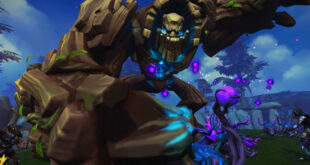Back in the late ‘90s, Gran Turismo was the No.1 racing game.
Although there was a number of unique driving titles, it felt like everyone was following the GT template.
But a studio called Criterion wanted to shake up the genre with its new game, Burnout. The title was going to mix the realism of the sim racer with the fun of the arcade.
The pitch was: ‘how do you drive a car when you rent one?’. When you get a rental you drive it like you would never drive your own car,” former Criterion boss Fiona Sperry says.
We wanted to make a game that wasn’t about pristine driving. Then Gran Turismo was the big racing game. It was all about being a real simulation being behind the wheel. While we respect that series immensely, we wanted to make the complete antithesis to it. If Gran Turismo was Dom Perignon champagne, we were the Jack Daniels. We wanted to make something that wasn’t about realism. It was about ragging the car and driving to the limits.”
She continues: ‘It was trying to be a racing game with car chases like those in the film Ronin.”
Not only did the studio want to turn the racing genre on its head – Sperry says that Criterion had big dreams for the title.
We said at the time we wanted to make a game that would sell 1m copies,” she says.
At the time, only EA was saying things like that. For us it was a bit stupid and naive.
We didn’t even have a publisher right up until we had finished the game, and we ended up releasing it with Acclaim. We really didn’t know what we were going to do.
But actually we hit our goal, which I suppose is a great example of how you should set yourself ludicrous goals: sometimes you can achieve them.”
This new, chaotic racing title launched to favourable reviews, with a Metacritic rating of 79.
It’s all such a blur because we then went straight on to do Burnout 2,” Sperry says. The reviews were pretty good. We were pretty pleased. It was very much a thing of ten people giving it a go and seeing what happened.”
Not only did it score well – it helped prove there was still an audience for the arcade, high score games.
"If Gran Turismo was Dom Perignon champagne, then Burnout was Jack Daniels."
Fiona Sperry, Three Fields/ex-Criterion
Arcade-type games had been written off as outdated and sort of old fashioned,” Sperry says. We showed that you could do that and it could do well. High scores and competition between friends never go out of fashion. People naturally do that in their real lives. High scoring became a theme for all the games we made.”
The series was rooted in this competitive arcade mentality, which helped the series change with new innovations in the industry.
We knew from when we looked at the online games of the time, like Climax’s MotoGP, that as soon as we let people race online they would make each other crash,” Sperry explains.
In MotoGP people would park across the track so you’d smack straight into them. We realised that people don’t play nice in real life and will try and screw each other over.
So we implemented Takedowns [where players win points for causing other racers to crash]. The first two Burnouts were traditional in some ways. They weren’t about fighting unlike Burnout 3. And when we got to Paradise, it became more about the online social element and playing together. That high score arcade root, the importance of friends and games as a sport, really has been a constant theme for all our games. That’s true in how we have seen that influence some other games as well.”

 MCV/DEVELOP News, events, research and jobs from the games industry
MCV/DEVELOP News, events, research and jobs from the games industry



